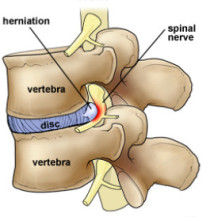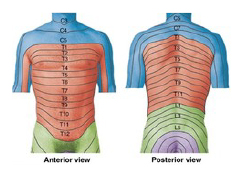Dr. Doctor weighs in on America’s drug crisis in an interview with Haley Hernandez. Read on at https://www.click2houston.com/health/tougher-regulations-keep-meds-from-patients-in-need
Super Doctor 2017

We’re proud to share that Dr. Doctor has been included in the 2017 Texas Super Doctors as seen in Texas Monthly for the seventh consecutive year with only five percent of the doctors in the state being selected to the list.
Pain Management Versus Spinecare?
 As I started to put together our next SpineCare Newsletter, I noticed that one of the main topics in the news these days is the prescribing of narcotics by physicians for pain management and the subsequent drug addiction and overdoses this creates. Take for example the singer Prince.
As I started to put together our next SpineCare Newsletter, I noticed that one of the main topics in the news these days is the prescribing of narcotics by physicians for pain management and the subsequent drug addiction and overdoses this creates. Take for example the singer Prince.
As of 2011, 75 percent of the world’s narcotic prescription drugs were prescribed and swallowed up in a country that makes up less than 5 percent of the world’s population, leading to the most common cause of preventable death in America today. Millions of Americans are addicted to narcotics and in 2013 alone prescription narcotics were involved in 37 percent of all drug overdoses. Starting in the 1990’s, there was a dramatic increase in the use of narcotic painkillers by physicians to treat non-cancerous medical conditions like low-back pain, sciatica and various musculoskeletal problems. There is almost no evidence to show that narcotics are safe or effective for the long-term management of non-cancerous pain, even though they are very effective for the relief of short-term pain.
Mid-Back Pain is Misunderstood
Pain in the middle of your back? Between your shoulder blades? Felt pain wrapping around your ribs? Pain in the mid-back is an area of the body that that is often misunderstood and not well treated by most medical practitioners. The cervical and lumbar spine get a lot of attention and most of the treatment. The thoracic spine, which is the part of the spine which is located in the middle of the back, is the longest part of the spine with the most discs and vertebrae. If you look at the figure below you can see how each one of the twelve thoracic nerves cover their own part of the middle of the back. They are labeled in this diagram from T1 to T12.
 Picture 1 – What I want you to notice is how each of these nerves start in the back and wrap all the way around to the front. For example, the part of the body near your shoulder blade is covered by the sixth and seventh thoracic nerves. Each nerve comes out of the spine and passes by the disc and then is attached to the bottom of the rib. What that means is if your sixth or seventh nerve is inflamed by the disc it can create pain in your shoulder blade. If you follow the T6 nerve in the above picture you can see how you may feel pain not only in the area of the shoulder blade, but also in the front of your chest, since that nerve runs all the way around to the front of the body.
Picture 1 – What I want you to notice is how each of these nerves start in the back and wrap all the way around to the front. For example, the part of the body near your shoulder blade is covered by the sixth and seventh thoracic nerves. Each nerve comes out of the spine and passes by the disc and then is attached to the bottom of the rib. What that means is if your sixth or seventh nerve is inflamed by the disc it can create pain in your shoulder blade. If you follow the T6 nerve in the above picture you can see how you may feel pain not only in the area of the shoulder blade, but also in the front of your chest, since that nerve runs all the way around to the front of the body.
Arthritis
Arthritic joint pain from your knee? Hip? Shoulder?
If your joints ache, they have lots of company. Over 46 million Americans suffer from arthritis. Osteoarthritis of the knee is the most common type, and the way it affects the knee is painfully simple. Osteoarthritis causes the lubricating properties of the synovial fluid in the knee joint to diminish, resulting in less protection and cushioning. In addition, osteoarthritis wears down the cartilage, resulting in your bones grinding against each other. That grinding hurts! You can feel it climbing stairs, working in the garden, walking or bending your knees to sit. It may even keep you up at night. Similar issues can affect many other joints, including the shoulder, hip and even the fingers.
Welcome Our New Nurse Practitioner!
 Alissa Nguyen received her Masters of Science in Nursing at the University of Texas Health Science Center in Houston. Prior to becoming a certified Adult and Gerontology Nurse Practitioner with the American Association of Nurse Practitioners, Alissa had experience as a registered nurse in general orthopedics, organ transplant, and cardiology. She is currently Vice President of Sigma Theta Tau International Nursing Honor Society, Zeta Pi chapter, and a member of Texas Nurse’s Association and Houston Area Nurse Practitioners. Outside of nursing, Alissa is passionate about volunteering and is an active Big Sister in the Big Brother Big Sister program and fosters homeless dogs through Golden Retriever Rescue of Houston and Animal Justice League.
Alissa Nguyen received her Masters of Science in Nursing at the University of Texas Health Science Center in Houston. Prior to becoming a certified Adult and Gerontology Nurse Practitioner with the American Association of Nurse Practitioners, Alissa had experience as a registered nurse in general orthopedics, organ transplant, and cardiology. She is currently Vice President of Sigma Theta Tau International Nursing Honor Society, Zeta Pi chapter, and a member of Texas Nurse’s Association and Houston Area Nurse Practitioners. Outside of nursing, Alissa is passionate about volunteering and is an active Big Sister in the Big Brother Big Sister program and fosters homeless dogs through Golden Retriever Rescue of Houston and Animal Justice League.
Super Doctor

Dr. Uday Doctor has once again been named a Texas Super Doctor. Marking his fourth year on this prestigious list, this honor first begins with a simple question to the physician community: “If you needed medical care in one of the following specialties, which doctor would you choose?” SpineCare Consultants is proud to have Dr. Doctor recognized by his peers as a Texas Super Doctor!
Tips For A Healthy Neck

- Learn to keep your neck always over your shoulders like they do in the military.
- Your neck and head need to live in a neutral position.
- If you need to bend down to pick something up, you need to bend your knees so that your neck stays over your shoulders.
- If you need to reach over your head, use a step-ladder so that your head stays in a neutral position over your shoulders.
- If you are sitting at a desk or driving in your car, you have to keep the back of your head glued to the back of the chair. Do not let it protrude forward over your body!
- If you work at a computer, make sure the computer is at eye level.
- When you read, make sure that your head is in a neutral position. You may need to stack up pillows if you want to read in bed.
- Watching TV in bed should also be done with you in a sitting position with your neck over your shoulders.
- Learn to turn your whole body instead of your neck as that will put a lot less stress on your neck.
- If you have a job where you are often looking down, make sure to straighten it back to a neutral position every four or five minutes.
- Do not sleep on your stomach as that will leave your neck in a twisted position. Either sleep on your side, or if you are going to sleep on your back, try to use a pillow that keeps your head in a neutral position.
Frequently Asked Questions – Shoulder Pain vs. Neck Pain
1) How do you diagnose whether the pain I have is coming from the shoulder or the neck?
We use a continuous x-ray machine and place an anesthetic inside the shoulder joint. We then assess the patient to see if the pain is gone. If the pain is not significantly better, we know there is another reason for the shoulder pain. We will then place an anesthetic and steroid on the nerve that goes from the neck to the shoulder. If the pain is gone within ten to fifteen minutes after this procedure, we have a diagnosis of a cervical nerve that is creating “referred” pain to the shoulder.
2) Who is a good candidate for these procedures?
Persons who have experienced any of the following are good candidates for our procedures:
a) If you have had constant shoulder pain that has not responded to conservative care, including rest, medications, physical therapy, and/or chiropractic care over a four week period
b) If you have had surgery on your shoulder and still have shoulder pain
c) If your shoulder pain limits your normal functions and keeps you from enjoying a full active lifestyle
3) Why do the procedures give long-term relief if the steroid is gone in a week?
Long-term relief from the injection can be achieved just because we are able to eliminate the inflammation. Remember, a lot of people have degenerated shoulder joints and cervical discs, but they only have pain when a structure in their shoulder or neck becomes inflamed. Most of our patients report relief that lasts from months to years. One of the most important ways to get long-term relief after the pain is to work on body mechanics and posture, which will keep the structure that was creating your pain from becoming inflamed again.
4) What can I do to keep the pain from reoccurring?
Using proper body mechanics and posture are the most important things to remember. The cervical discs are located in the front of the spine right behind your voice box. That means every time you bend your head down to look at your phone, look at your computer, or read a book, you put a lot of pressure on the discs, which in turn can lead to degeneration of the discs in the neck over a period of time. Look at the section on “tips for a healthy neck” in this newsletter for specific things you can do to avoid putting stress on your spine.
5) You do not perform pain management techniques, such as series of epidural steroid injections, Botox injections, and trigger point injections in the neck. Is there a reason why you avoid doing these types of procedures?
These procedures are based on chronic pain management techniques where the main goal is to have ongoing long term care of the patient. There is absolutely no diagnostic information gained by these procedures, and they really just mask the problem. Our main goal is to either eradicate the pain long-term or locate the exact issue creating the pain and have it fixed.
My shoulder hurts – Where is it coming from?

There are many possible causes of pain in the shoulder, but the two main problems that create pain in this area is inflammation in the shoulder itself, or a nerve in the neck that refers pain to the shoulder. Diagnosing pain in the shoulder area may be difficult at times due to the fact that as we age there will be wear and tear in the shoulder joint without creating pain.
The same type of changes will occur in the neck with all of us gradually having herniated discs and arthritis, causing only minimal discomfort unless a specific structure in the spine is actually inflamed. 50% of all people aged 50 and above have been found to have significant changes by MRI with no pain. This is the reason why just getting an MRI of the shoulder or neck will not give you an answer.
Our goal at SpineCare Consultants is to locate the exact structure that is inflamed and eliminate your shoulder pain. This information can then be used to make the right decisions when it comes to therapy, exercises, and, if needed, surgery. The most important thing to realize is that you usually hurt only because there is a structure either in your shoulder or neck that is inflamed, and if we can eradicate the inflammation, you have the possibility of long-term relief.


